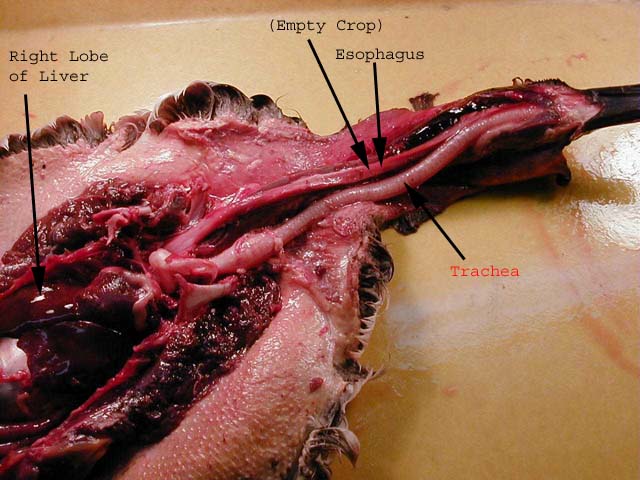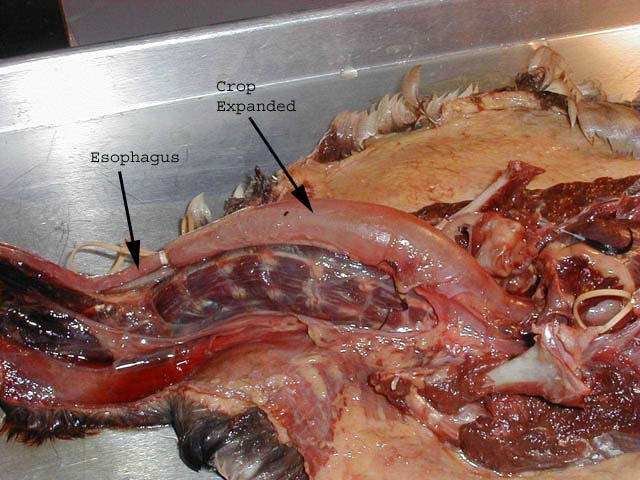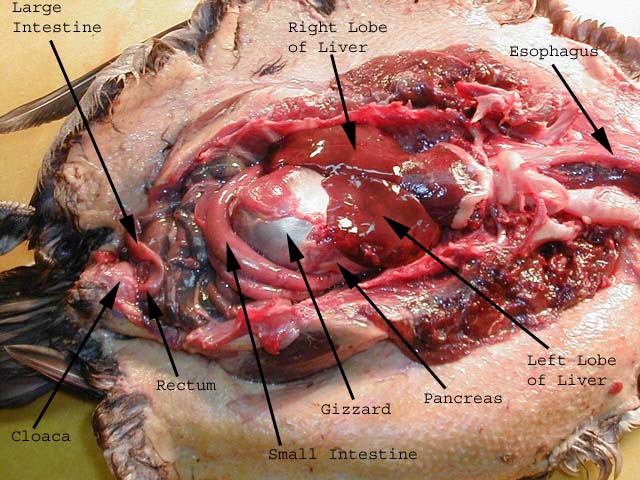
Digestive System of the Canvasback Duck
The digestive system in the duck is more specialized than in the Copperhead for example. The duck lacks teeth, and the bottom of its mouth is not firm so it can flex out somewhat to allow the duck to take in and sift through water to obtain food particles. Food is moved into the esophagus, which in most birds including the duck leads into a specialized expansion of the esophagus known as the crop, which aids in the temporary storage of food. From the esophagus, the food enters into a thin-walled structure of the glandular section of the stomach called the proventriculus. The proventriculus connects to the ventriculus, which is known as the gizzard. The gizzard leads into the small intestine. The pancreas is located on the small intestine. The small intestine leads into the large intestine, which leads into the rectum, then the colon. The colon empties into the cloaca, thru which waste products are excreted. The gallbladder is located within the lobes of the liver, as opposed to being more exposed in the Copperhead Snake (Kardong 2002).

Different color text denotes system.


The Stomach of the Duck
The stomach of the Canvasback duck has similar regions (the fundus and pylorus) to that of reptiles such as snakes. However, the duck has an extra region of the stomach that is more specialized for its diet, known as the gizzard that the snake and many other taxa do not have. Due to the reduction or lack of teeth in many Aves, the gizzard functions in the mechanical breakdown of food, which is usually done by the teeth of other taxa. The extremely thick muscles of the gizzard grind large food particles against intentionally swallowed stones. This aids in the breakdown of cellulose walls in the diet of animals that consume large amounts of plant material. Gizzard stones similar to those found in the bird gizzard have been found in fossils of some dinosaurs, suggesting that a specialized gizzard structure might have been present in some large herbivorous dinosaurs. A gizzard is also present in crocodiles and alligators (Kardong 2002).